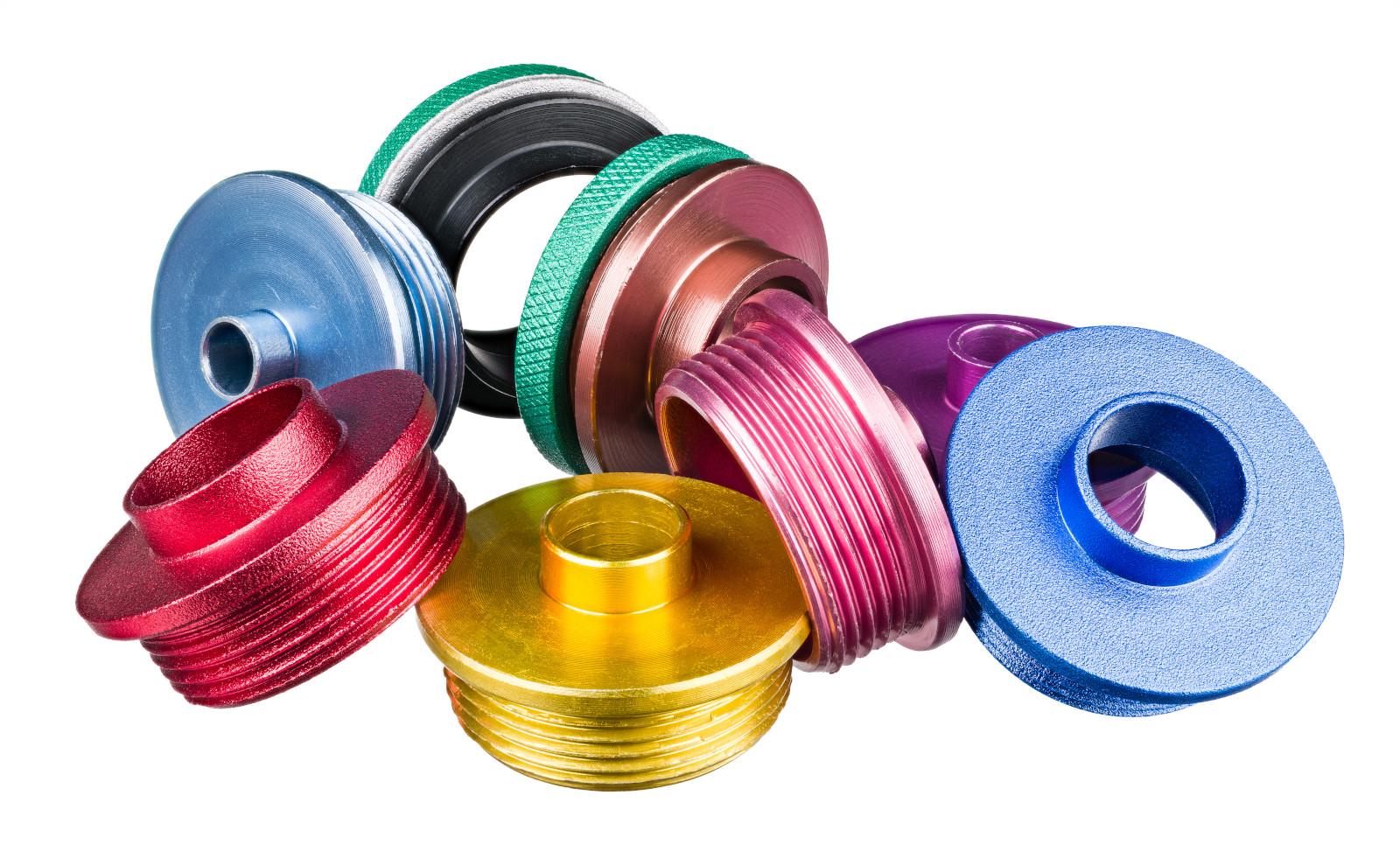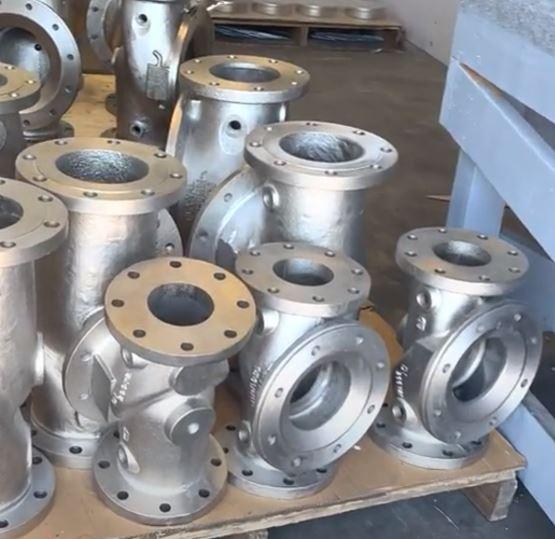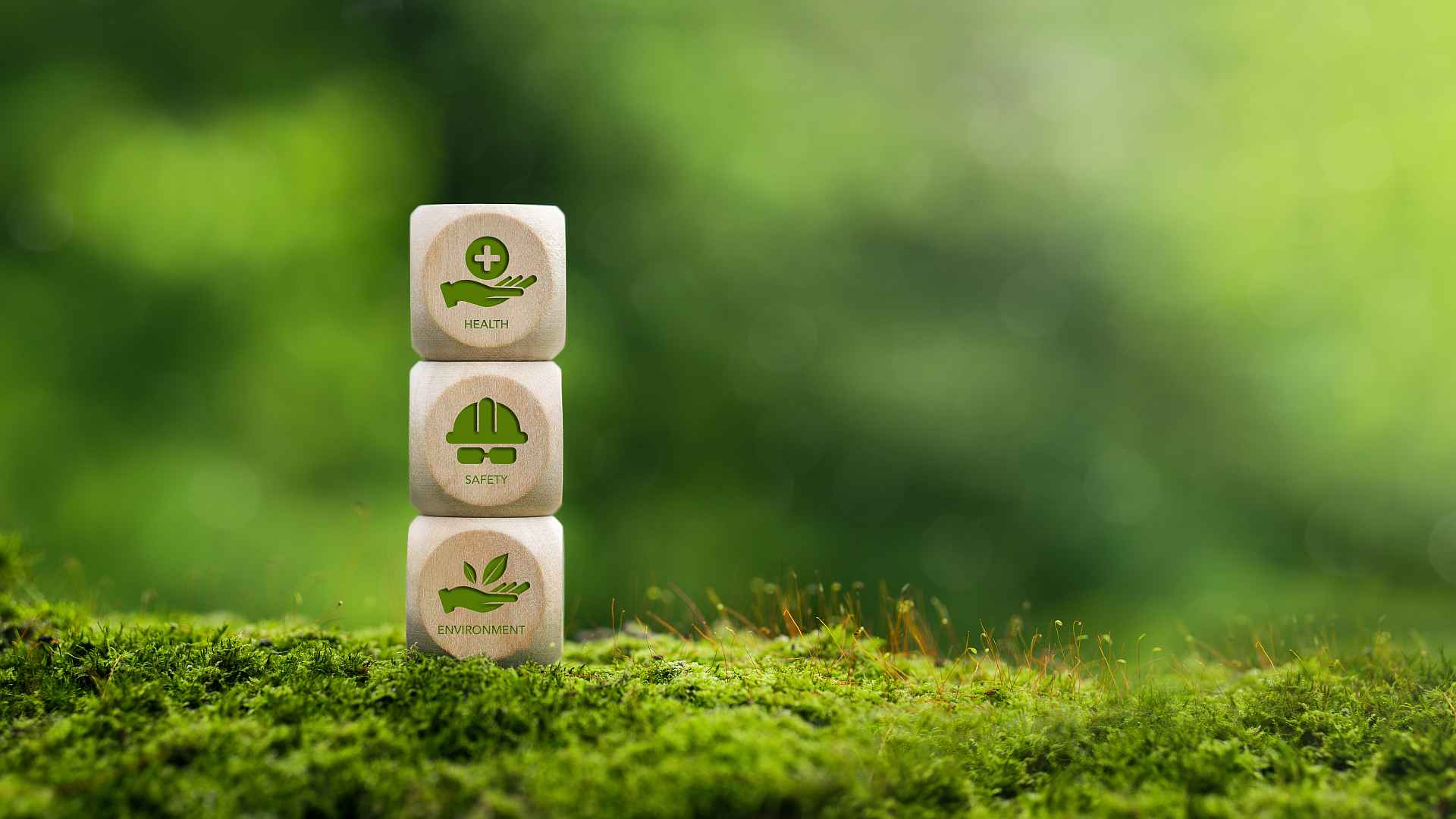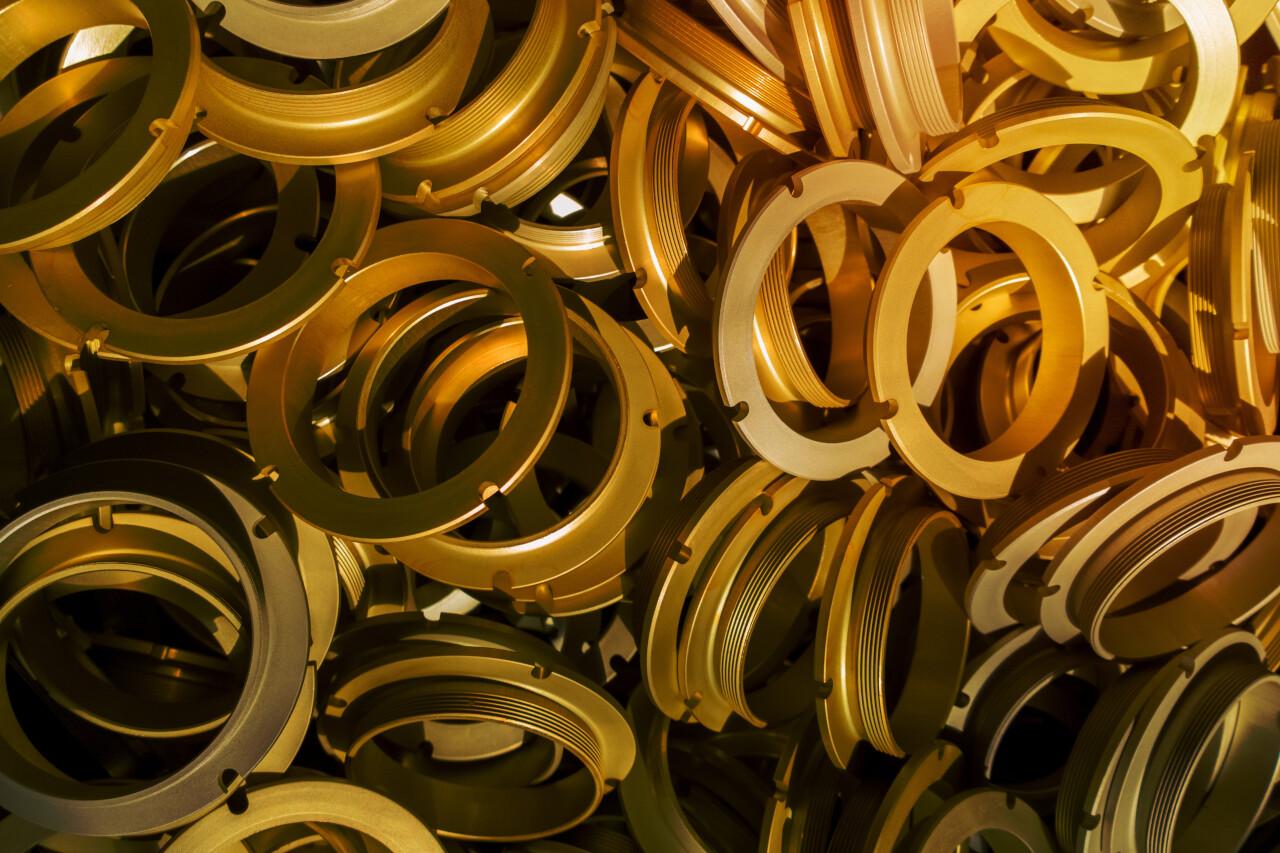Colorful Possibilities: A Deep Dive into Aluminum Anodizing Dyes and Finishes
Aluminum components are anodized for a number of reasons–corrosion resistance, improved durability, wear resistance. There is another benefit that anodization can offer that has less to do with functionality and longevity and more to do with aesthetics. Anodization offers a method for electrochemically coloring an aluminum surface for a long lasting and fade resistant surface finish.
How anodization works
In order to understand how the dyeing process occurs, it’s important to first understand the anodization process itself. Aluminum anodizing is an electrolytic process that increases the natural oxide layer on the surface of a part. This increases the corrosion resistance of the surface, as well as its abrasion and wear resistance.
Aluminum parts to be anodized are first pre-treated and prepped, then immersed in an electrolytic bath that typically contains sulfuric acid. A direct current is then applied to the bath, causing the chemical reaction of controlled oxidation. This first forms a layer of thin, non-porous oxide that acts as a protective shield and a base for subsequent layers such as color or other finishes.
If the anodization process is taken a step further, it forms a thicker, porous oxide film that can better absorb dyes and other additives for coloration or functional properties. The porous layer can also be sealed for additional protection.
Adding a bit of color
Aluminum anodizing colors differ from paints, being a subtractive rather than additive surface. Unlike paint, which simply covers a substrate, the dyed oxide layer doesn’t actually reflect any light that hits it–instead it transmits any light rays to the aluminum base underneath, which then reflects that light back through the film. In this way, the anodized oxide layer acts as a filter for the light, which can make color matching more difficult. Because of this, the actual color match depends not just on the dyes, but also on the aluminum grade, the type of anodization applied, the number of dyes used, and the crystalline structure of the metal.
When it comes to actually adding the color to an anodized aluminum part, there are four main ways to do so during the actual chemical reaction.
- Electrolytic coloring (not offered by RMF) involves immersing aluminum parts in a solution containing metallic salts of a certain color. These salts fill the pores of the oxide layer, creating a coating that is strong enough to resist UV rays, but is limited to only a certain few colors such as bronze or black.
- In dip coloring, (offered by RMF) the parts are placed in a tank that contains a particular dye, which fills up the pores. The parts are then rinsed in deionized water and sealed for maximum corrosion resistance. Although dip coloring has many color variants, its UV resistance is not as good as that of electrolytic coloring.
- Integral coloring (not offered by RMF) combines anodizing and coloring in order to add a bronze or black surface finish to aluminum products, and features excellent abrasion resistance.
- In interference coloring, (not offered by RMF) the pore structure of the oxide layer is enlarged, allowing for the deposition of several colors ranging from blue and green to yellow and red as a result of optical interference.
Reid Metal Finishing–Supplying Every type of Quality Metal Finish
In need of a metal finishing company for your products? Reid Metal Finishing has been the trusted partner for metal finishing services of all types, including a wide range of aluminum anodizing capabilities, for several decades. Check out our website to learn more!




